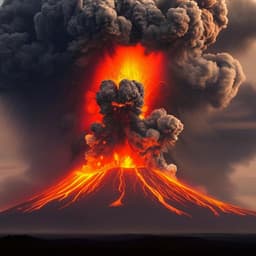
Earth Sciences
Multiphase turbulent flow explains lightning rings in volcanic plumes
M. Ichihara, P. D. Mininni, et al.
Discover how the explosive eruption of the Hunga Tonga-Hunga Ha'apai volcano on January 15, 2022, generated the highest concentration of lightning events recorded. This groundbreaking study, conducted by Mie Ichihara, Pablo D. Mininni, S. Ravichandran, Corrado Cimarelli, and Chris Vagasky, unravels the mystery of turbulence-induced particle clustering and its role in revealing volcanic activity hidden beneath ash clouds.
Playback language: English
Related Publications
Explore these studies to deepen your understanding of the subject.







